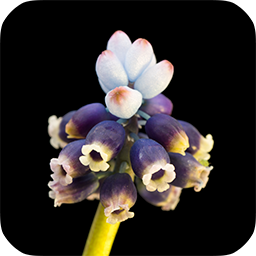Here I document the assembly and analyses of double-digest restriction site-associated DNA (ddRAD) sequencing data for the geophyte genus Muscari. The corresponding paper was published Jan. 2023 in Taxon:
Böhnert T, Neumann M, Quandt D & Weigend M. 2023. Phylogeny based generic reclassification of Muscari sensu lato (Asparagaceae) using plastid and genomic DNA. Taxon 00: 1-17. doi: 10.1002/tax.12864
This repository consists primarily of two Jupyter-Notebooks: One documents the assembly and filtering of the ddRAD data, as well as parts of its analyses. In the second notebook I document how I plotted the phylogentic trees of an additional data set of cholorplast seqeunce data.
The grape hyacinth (Muscari Mill.) represents an important ornamental plant group in Asparagaceae subfamily Scilloideae, comprising some 80 species distributed mainly in the Mediterranean. However, genus delimitation has repeatedly shifted over the past two centuries and a general consensus has not been reached so far. To tackle this problem we made use of a classical chlorplast marker phylogeny as well as genome wide SNP data. We perform concatenated maximum likelihood inference for both datasets as well as a coalescent-based approach and principal component analysis (PCA) on the ddRAD data. We find that the morphological characters traditionally used to distinguish different genera are not diagnostic for the clades here retrieved. Also, the segregates Pseudomuscari and Leopoldia are deeply nested in Muscari and we therefore propose a broadly defined Muscari with five subgenera. The subgenera roughly correspond to previously recognized entities, with the exception of the newly identified clade here proposed as M. subg. Pulchella subg. nov.
